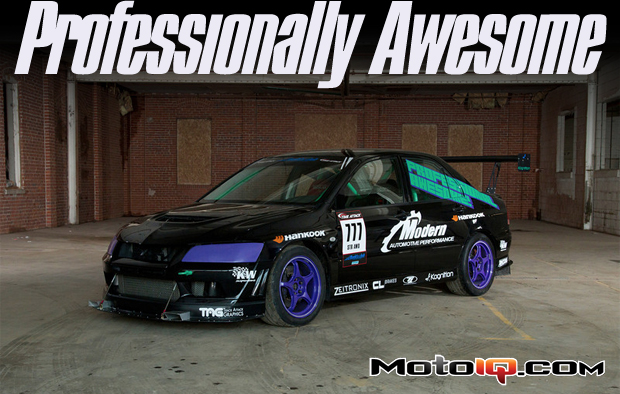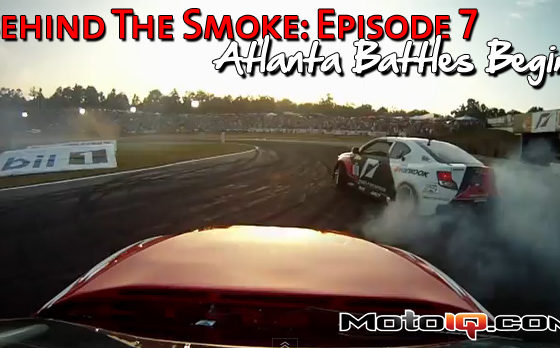
Professionally Awesome – A look inside Professional Awesome's EVO VII Street Class Time Attack Challenger
By Mike Kojima
We first spotted Team Professional Awesome's EVO VII at last year's Redline Time Attack at Cal Speedway. To be honest, it was not the car that first attracted us but the name of the team. After looking the car over, we knew at once that this was a well constructed and balanced car.
After the event we caught up with team principle Dan O'Donnell to see if we could get more info about the car. After a few back and forth attempts we were finally able to get some decent pictures of the car's parts, enough to be able to talk about the car in detail.
 |
| The Professional Awesome Evo is a car close to our heart. Fairly low buck but well thought out and thoroughly massaged this is a car that any intelligent enthusiast could build with some research and elbow grease. Photo by Abby Jons |
What has impressed us is that this is the car that does more with less. This is not a super esoteric machine constructed with the most exotic bespoke parts imaginable but basically a winning machine constructed at a bolt on level using a great deal of common sense and professional awesomeness! It's something that nearly any enthusiast could build by making smart parts choices and a bit of thinking. Let's go through the car bit by bit and check out the attention to detail and the simplicity of this machine.
The engine is a giant killer consisting of just bolt ons. Brian Crower 272º Camshafts were selected because the cams were on sale for a really good price! The BC cams are designed to work with the OEM spring and retainers and have an intake and duration of 272º and a duration @ .050 of 206º with a lift of 10.54mm intake and 9.86mm on the exhaust side.
 |
| We also think the PA Evo is a good looking machine. |
After repeatedly blowing the head gasket, to help assure a reliable head seal ARP Head Studs were selected. ARP uses premium grade 8740 alloy and are precisely heat-treated to a yield strength of 200,000 psi. The ARP head studs are undercut which makes for a more consistent clamping force, one that compensates for head gasket compression when the head is installed. With ARP studs and copper coated stock headgakets, the blow out problem was solved.
An APS Intake was used due to its smooth bore cast aluminum construction which sources cool air from the driver's side inner fender. A really important feature is its long length before the MAF which helps give more consistent air temperatures and reduces turbulence before reaching the MAF sensor. This allows for more consistency and reliability when tuning. This is important as the EVO's Karman Vortex MAF sensor is very sensitive to turbulence, allowing the intake air more time for the flow to become laminar before hitting the MAF simplifies tuning issues at higher vehicle speeds.
 |
| The PA Evo at Sebring. Photo by Abby Jons |



